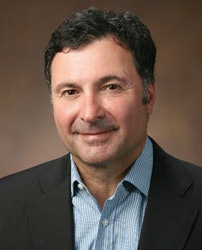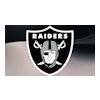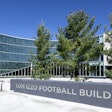A concessions expert explains the importance of strategic, fan-friendly food service.
 Photo of former tennis pro and restaurateur John Sergi
Photo of former tennis pro and restaurateur John Sergi
As the U.S. Open is contested this month in Flushing, N.Y., fans will sample not only the best tennis the world has to offer, but some of the finest food available in the sports concessions universe, too - from Indian, Japanese and Latin flavors to local favorites from the likes of Manhattan's own Carnegie Deli. For that, they can thank former tennis pro and restaurateur John Sergi, who for the past 21 years as a hospitality and culinary strategist has overseen the food operations at prominent tennis and golf tournaments, as well as at Citi Field, the first-year home of the New York Mets. At each stop, he has eschewed the tactical approach of concessions as revenue generator and instead emphasized strategic, fan-friendly food service. Paul Steinbach asked Sergi to dish his philosophy.
Q: Is there a huge difference between designing concessions strategies for a tennis tournament versus a baseball game?
A: In tennis, there's incredible dwell time and a more upscale demographic. Baseball is also a great food sport, because most people are not going to sit glued to their seats - particularly in new ballparks like Citi Field, where you can see the field from anywhere on the concourse. But tennis takes the circulation that we have in baseball to a whole other level, where people will sit out an entire match and take two hours to have a proper meal. Then they'll go back and watch more tennis.
Q: Should concessions operations be set up to take full financial advantage of such captive audiences?
A: It takes a lot of energy, effort and expense to deliver food in that environment. It's very complicated. So I don't have any issues with people feeling they need to see some return on that investment. But there's a difference between making a profit and profiteering. For too many years, public opinion about food at sporting events was that it was expensive and it wasn't very good. That never seemed right to me in a place where people are going to have a good time.
Q: Is per-capita spending the true measure of concessions success?
A: When you're selling food to enhance the experience of being in your building and to make people happy, per cap isn't the measure. The measure is transactions per guest. There aren't many people tracking that right now, but I do. When I look at how the concessions programs I'm involved with are performing, I look at participation. If I go to a sporting event and the first thing I buy is a $9 beer, I take my wallet and push it a little deeper into my pocket.
Q: How would you characterize this participation so far at Citi Field?
A: Mets vice president Mike Landeen told me that in the first 25 games of the season, attendance was down 18 percent from Shea Stadium because the new building is that much smaller, but our food sales were up 43 percent. And we lowered prices from Shea on such core items as hot dogs, water, soft drinks and beer. Our strategy was that if we earned the customers' trust, they would reward us with greater participation. We were definitely going to generate less per unit; we knew that. But we thought we would sell more units because people felt comfortable there. This, to me, is the future.

































